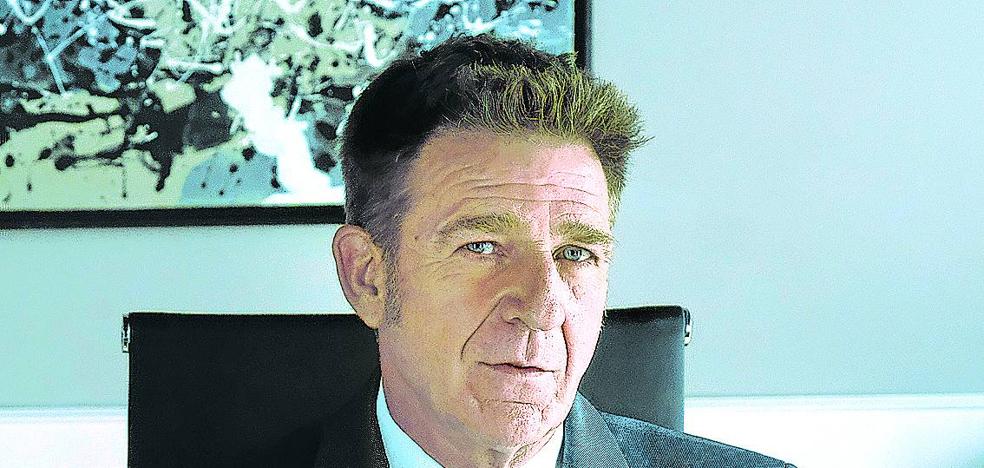Giuseppe Tornatore premieres in theaters the definitive documentary about the most popular and prolific composer, coming clean in front of the director’s camera, accompanied by stars like Clint Eastwood, Bruce Springsteen and Quentin Tarantino
It was not easy to interview Ennio Morricone. In 2005, when he was 76 years old, he came to Bilbao to offer a few concerts and agreed to be interviewed by this newspaper. “Don’t ask the teacher what his favorite movie is, he hates it,” one of his ‘bodyguard’ warned the journalist, who was present at the meeting like his wife. Not to touch the taboo subject, of course: the five failed Oscar nominations. Two years later he would receive the honorary Oscar and, in 2016, four years before his death, his first sculpture for the score of ‘The Hateful Eight’, by Quentin Tarantino.
“If I compare myself to Mozart, I am lazy,” confessed the author of more than 500 scores, who wrote twenty soundtracks in 1968 alone, in Bilbao. The most popular and prolific film musician got up at five in the morning to work until his last days. The rigor and the question with which he approached his profession is evident in ‘Ennio, el maestro’, a jaw-dropping documentary by Giuseppe Tornatore, which arrives in theaters on 13 May after going through the Venice and Barcelona festivals. For the first time, the serious and hermetic Morricone opens up to the director of ‘Cinema Paradiso’, who discusses the life and work of the genius in over 156 minutes. In addition to excerpts from his films, the documentary contains a dizzying list of interviewees: Quentin Tarantino, Clint Eastwood, Bruce Springsteen, John Williams, Hans Zimmer, Bernardo Bertolucci, Oliver Stone, Metallica…
Who hasn’t whistled the central melody of ‘The Good, the Bad and the Ugly’ or imagined the Iguazú Falls to the music of ‘The Mission’? How not to get carried away by melancholy at the love theme of ‘Cinema Paradiso’? Who doesn’t get goosebumps at the march of ‘Novecento’? With the permission of JohnWilliams, Morricone is the only composer whose celebrity has transcended the cinephile sectors. His most celebrated pieces are part of popular culture. “My favorite composer above Mozart, Beethoven and Schubert,” Tarantino says in the film.
‘Ennio, el maestro’ shows how Morricone’s scores not only accompany the images, but also change their meaning and significance. Caught in the intimacy of the studio of his Roman mansion, surrounded by mountains of records and sheet music, the composer waves his arms and conducts without an orchestra in an impressive image that follows the confessions: only at the end of his career did he manage to make peace. with film music, which seemed little to him compared to ‘serious’ music. Morricone always sought recognition from other contemporary composers, who saw soundtracks as pure food work. Little did the poor know that the author of ‘The Untouchables of Eliot Ness’ was going to sell 70 million records.
A child prodigy, like the other great Italian film musician, Nino Rota, Ennio Morricone, was born in 1928 in Trastevere in Rome. The son of a jazz trumpeter and a housewife, he began developing his musical skills at the age of six, completing his education ‘cum laude’ at the Santa Cecilia Conservatory in half the time of his classmates. At the age of 16 he already played with orchestras in hotels. In the mid-1950s he worked as a trumpeter in nightclubs, wrote music for RAI programs and arranged and orchestrated some of the most legendary songs of the Italian stars of the time: ‘Sapore di sale’, by Gino Paoli and Jimmy Fontana’s ‘Il Mondo are two wonderful examples.
After collaborating with Mina, Paul Anka and Rita Pavone, he signed his first soundtrack in 1961, ‘El federal’, a tragicomedy set in the Second World War. World recognition came from Sergio Leone, a former classmate responsible for the trilogy that consisted of ‘Death Had a Price’, ‘For a Fistful of Dollars’ and ‘The Good, the Bad and the Ugly’. Morricone incorporated previously unreleased sounds into film scores. The whistles, gunshots, whistleblowers and cries that rhythmically punctuated the adventures of the “man with no name” revolutionized a genre in which Hollywood had set the standard based on orchestral melodies. The harmonica and electric guitars also had a place in the staves of the Roman, who continued the experiments in the hands of the most relevant Italian filmmakers: Bertolucci, Pasolini, Pontecorvo…
“The worst thing you could ask of Ennio was that he wrote a song in the same way as any of his other songs. I hated him,” reveals Giuseppe Tornatore, who was lucky enough to have the master’s music in ten of his films. “The documentary also shows his distaste for the melody in quotes. He considered himself a maker of melodies rather than creating great works, which made him feel guilty, a kind of impostor. Another protagonist in the shadow of ‘Ennio, the teacher’ is María Travia, his wife for 64 years. Not only did she protect him and help him overcome his shyness, but she was the first judge of his compositions. Before the directors heard her songs, she gave her thumbs up. “Maria gave him the view of the public, of simple people uncontaminated by the canons of the academic music world,” Tornatore reveals.
Source: La Verdad
I am an experienced and passionate journalist with a strong track record in news website reporting. I specialize in technology coverage, breaking stories on the latest developments and trends from around the world. Working for Today Times Live has given me the opportunity to write thought-provoking pieces that have caught the attention of many readers.



